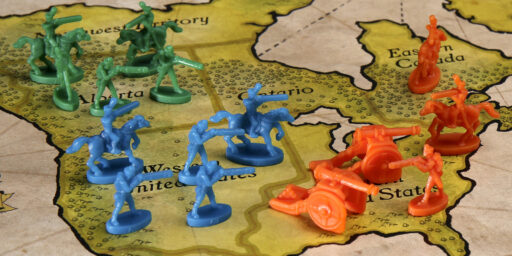Common Infections and Childhood Leukemia
Playgroups Could Cut Child Leukemia Risk -Study (Reuters)
Sending very young children to daycare centers and playgroups could help protect them from childhood leukemia, researchers said on Friday. Some degree of exposure to common illnesses early on is important for the immune system, they agreed. Unknown infections, along with a genetic default that occurs before birth, are the most likely cause of childhood leukemia, they added in a study. “Early exposure to infections through social contact seems to be protective against the disease,” Professor Mel Greaves, of the Institute of Cancer Research in London, told a news conference.
An analysis of the results of the largest and most comprehensive study of childhood leukemia revealed that most cases of the disease originate in the womb when chromosomes break and exchange bits of their DNA. But the disease is triggered by unknown infections during childhood that trigger an immune system response leading to the illness. “Challenges to the immune system, possibly by infection, may be the main cause of leukemia,” said Dr David Grant, of the Leukemia Research Fund in England.
Common infections can lead to leukaemia (ANI)
Scientists have found that leukaemia in children is often set off by common infections and one might be able to prevent some cases of the disease by identifying the exact type of infections involved. According to the journal Nature, in the United Kingdom Childhood Cancer Study researchers proposed a link between childhood leukaemia and viruses such as measles in the 1920s and in 1970s found that viruses played a crucial role in onset of leukaemia in cats and cattle.
Mel Greaves of the Institute of Cancer Research, London, said that infections induce a proliferation of white blood cells in bone marrow as part of the normal immune response. In those genetically predisposed to leukaemia, the infection could cause an uncontrolled proliferation of cells. Exposure to pathogens in the first year of life may help to train a child’s immune system to somehow prevent this, Greaves said.
Leukaemi accounts for a third of all cancers in children below 15 and is treated with aggressive chemotherapy. It commonly strikes infants in the first two to four years of life and about 80 percent of those affected survive the first 5 years following diagnosis.
Interesting. Of course, putting children in nursery school and the petri dish of diseases that entails means they will be sick a lot. So, to perhaps cut the risk of a truly nasty disease requires virtually guaranteeing they’ll have numerous bouts with lesser ones. A Hobbesian choice, indeed.





